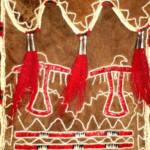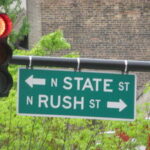The history of Olvera street in Los Angeles is as old as the city itself. Located at the heart of the original settlement that has grown into a world famous metropolis, Olvera street is a rare quaint haven in the middle of downtown Los Angeles.
Los Angeles was first settled in 1781 along side the Los Angeles river. The location proved to be ill suited as the river flooded the plains several times and the small town was moved to higher ground until finally finding a permanent spot in the early 1800’s. By this time the settlement had grown large enough to support its own church and a plaza. The church still stands today and is know as the Old Plaza Church. The plaza itself was extended into what would eventually become Olvera Street.
Olvera street is not a long street. It’s actually not a street at all rather a named alley. Still, its historical importance is evident in the no less than 27 historical buildings lining the street. Among them Avila Abode, the oldest residence still standing in Los Angeles.
Olvera street was originally called Vine street bit was renamed Olvera street in 1877 in honor of Augustin Olevera. Olvera was the first Superior Court judge of Los Angeles county and had lived a lifetime in Olvera Street. The street had long been at the center of the growing city, but shortly after the renaming this would change dramatically.
In the 1880 Los Angeles started attracting large numbers of settlers. The first railroad connection to Los Angeles was completed in 1876 which brought with it explosive growth. The city saw a large influx of European and East coast immigrants that shifted the center of the booming city from the old plaza to what is currently the Civic center in Los Angeles. The old brick buildings around Olvera street and the old city center quickly fell into neglect. By the 1920’s the area had turned into a slum that served as quarters for the poor.
The restoration of Olvera street was campaigned for and overseen by Christine Sterling. After she realized the state of the area and particularly Avila Abode she started a very public campaign for the conservation of the historic birth place of Los Angeles. Her vision for the area was to transform it into a romantic Mexican marketplace and cultural center. The plan had sufficient commercial viability to draw support from the Chamber of Commerce and The Los Angeles Times. Despite massive popular support, the restoration project suffered severe financial difficulties and in 1928 looked to be doomed as the city council posted a notice of condemnation outside the Avila Abode.
Persistent campaigning from Sterling increased the popular support for preserving the area and several private companies donated building materials to the project. The city council reversed it’s ruling and the city even provided a crew of inmates to serve as labor in the reconstruction effort. On Easter Sunday 1930 the street was reopened and closed to traffic. The Mexican market became an instant success and was quickly a popular tourist attraction.
Today, Olvera street remains a living museum and a colorful monument to Mexican culture. The street with it’s historic Mexican buildings and many vendor stands is one of Los Angeles most famous tourists attractions. The old plaza claims to be the most visited Mexican market in the world. On major Mexican holidays like Cinco de Mayo and Mexican Independence day the street is filled with visitors as the area explodes in music and celebration.







